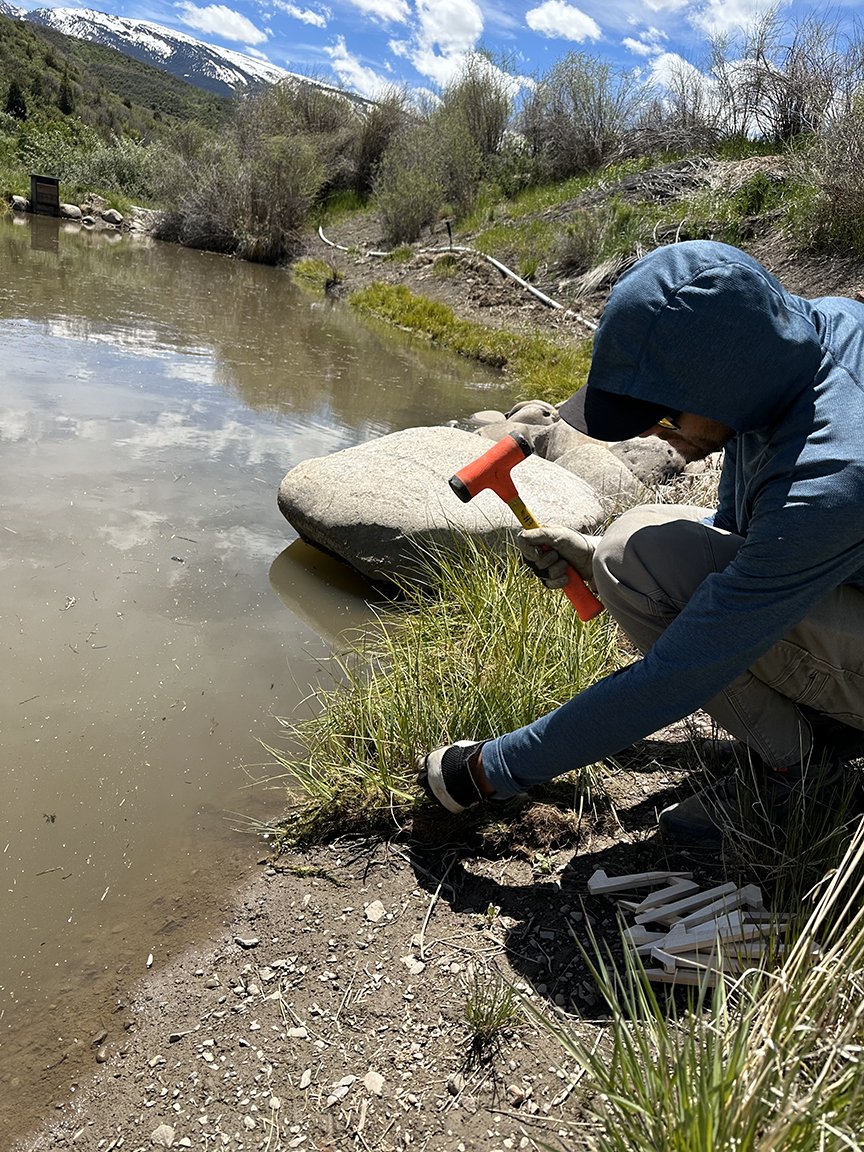Rolling out a new approach to wetland restoration

Laying wetland sod around an irrigation pond in the Brush Creek Valley.
Restoring a landscape tends to be a long process, but Open Space and Trails rolled out a new technique last month that may speed up the success rate.
Open space in the Brush Creek Valley near Snowmass Village is the site of a couple of different efforts – one project is aimed at regenerating a sagebrush meadow, another is reclaiming old agricultural ponds where stagnant water, invasive weeds and bare ground once dominated, to create a wetland habitat. In 2022, following the regrading of two old ponds, the area was replanted with wetland and riparian plants, and appropriate upland shrubs on the adjacent hillsides. It was a resource-intensive effort to convert a much-degraded area into effective habitat, but is showing great success and is now dominated by native plant communities.
A third, upper pond remains in place as a key piece of a greater ditch irrigation system serving private landowners up and down the valley. After two years of careful treatment on the edges of this pond to rid the banks of the invasive reed canary grass, the key to keeping that grass at bay was quick establishment of desirable wetland flora in its place. Reed canary grass is an aggressive invader that forms dense stands that suppress native plants and reduce plant diversity, which in turn reduces the habitat value to wildlife. It is now very common across the West, particularly in disturbed wetland or wet agricultural areas, and, unfortunately, is very difficult to eliminate.
In the past, OST has used the common method of planting native wetland “plugs” – seedlings of wetland plants that are inserted into the mud by hand – in restoration settings. They are quite small and it can take hundreds of plants and many labor hours to install them, and even then much area is left open for non-native competitors like reed canary grass to establish within the restoration zone. If only we could roll out sod to completely cover the area and get ahead of those pesky invaders. As it turns out, we can – and did!
A wholesale native-plant grower in Idaho produces wetland sod made of biodegradable coconut fiber mats full of growing native wetland species. Water sedge, beaked sedge and common spikerush now line over half of the pond’s perimeter. The sod is dense enough to shut out other, invading plants, and is healthy enough to quickly put down roots and establish itself. OST will also evaluate the ability of these sedges and rushes to spread beyond the extent of the original sod application. If they can fill in bare ground areas between segments of sod, or work in conjunction with supplemental plugs to do so, then we really have some tools to work with at a bigger scale, if and when other wetland areas need intensive restoration work.
“Sod is a perfect application,” said Liza Mitchell, OST’s natural resource manager. “It is a new technique for us, and the field of restoration ecology, but it holds so much promise. It can basically fast-forward the re-establishment of wetland plants.”
Results from the new approach will be documented as part of OST’s ongoing monitoring of the restoration efforts. At three weeks after installation, the sod was doing well and roots were growing past the matting and into the soil onsite – one of the keys to long-term success! Passersby on the Brush Creek Trail can watch this work in progress, as well. Take a look, and find out more about these ongoing restoration efforts.
– By Pitkin County Open Space and Trails
